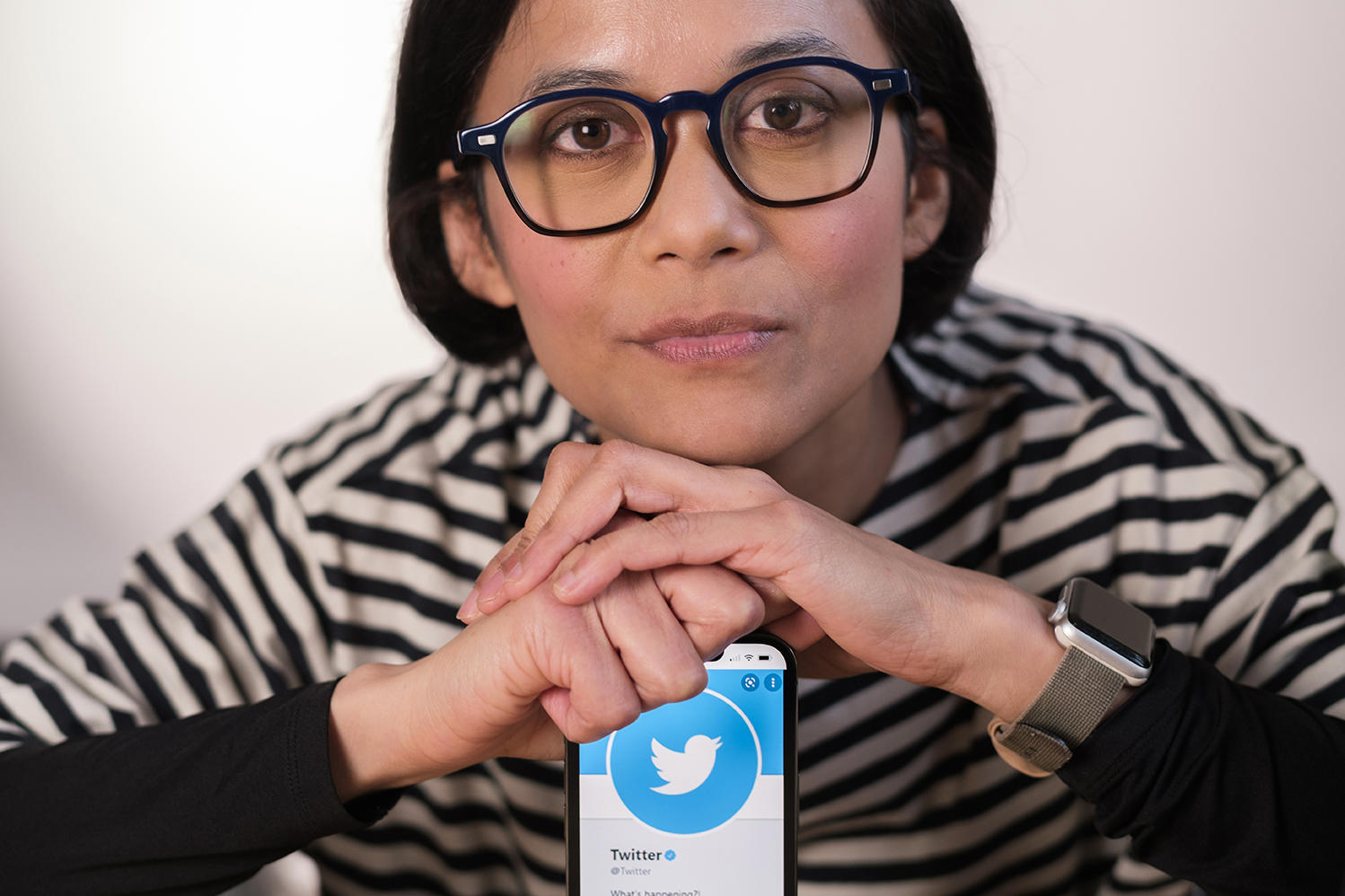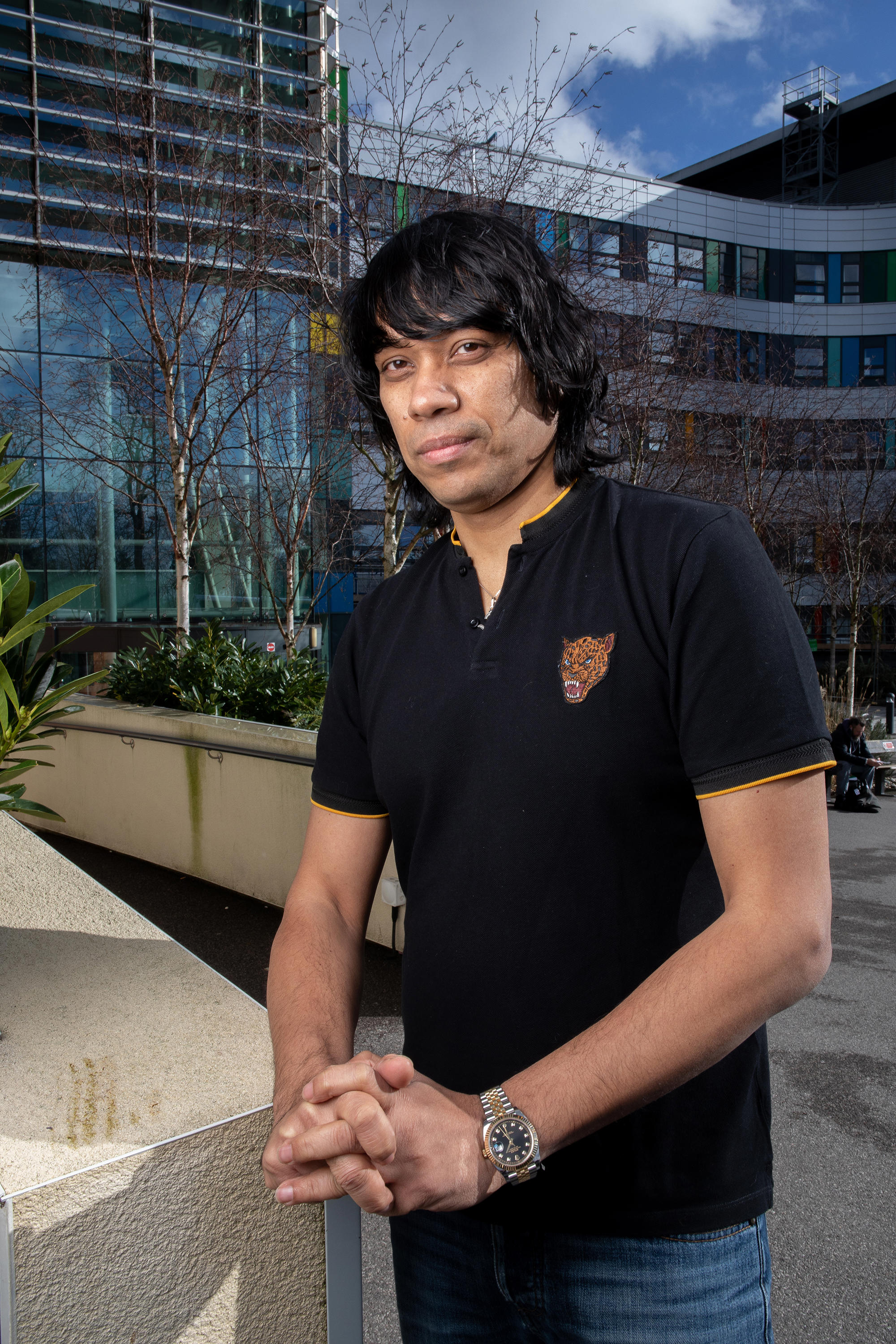When Rosie Baruah first joined Twitter, she used it simply to check up on travel and transport and practical things such as that.
She didn’t start engaging with it actively until she became chair of the Women in Intensive Care Medicine group – when she quickly saw its potential.
‘Becoming more active in the medical Twitter universe, it became clear to me that it’s a real-time means of communication with peers, it’s public and accessible in a way that no other medium really is. And despite the tight character limit, you can have really quite meaningful conversations on Twitter – it’s brought me opportunities I wouldn’t have had otherwise,’ she says.
 BARUAH: ‘You can have really quite meaningful conversations on Twitter’
BARUAH: ‘You can have really quite meaningful conversations on Twitter’
If you go to Twitter and search on #MedTwitter at any point, you’ll find posts from (mostly) doctors from around the world.
A quick check on Friday 22 October at 10.30am found tweets ranging from a UK doctor commenting on a lack of trauma beds in their large acute hospital, an algorithm (with illustration and invitation for questions) on an approach to low bone density and pharmacologic therapy for osteoporosis – and a jokey flow chart attempting to explain what a senior house officer is (or was).
Pile-ons
It’s clear that many medics are deriving pleasure, comradeship and even learning from taking part – and even those who do not actively tweet themselves can follow the conversation simply by searching on the hashtag.
But there is also a negative side to social media – doctors have found themselves subject to abuse for expressing sentiments unpopular in some quarters, such as promoting vaccinations, or mask-wearing. Some have also faced strong criticism from other doctors and their supporters – sometimes called a ‘pile-on’ where people can be subject to a barrage of tweets taking issue with their points.
Still others have faced criticism for expressing their views in public, and some have even been threatened with reports to the GMC, or to their employers, on the basis of what they have tweeted.
It’s brought me opportunities I wouldn’t have had otherwiseDr Baruah
So how do you ensure that you get the best out of #MedTwitter – and avoid the pitfalls? Partha Kar is no stranger to Twitter controversy.
A consultant in Portsmouth, a national co-lead on diabetes, and director of equality, medical workforce, with NHS England, Professor Kar is a big supporter of the social media platform, but his openness has, on occasion, brought disapproval.
‘Twitter is a really nice forum for continuous professional development, at least for me with such a busy life,’ he says.
‘I’ll see a paper mentioned and I’ll earmark it for reading later. Also, in my [national] role, it gives me a really good insight into at least one sector of the population we serve – with diabetes, it gives a good idea of the issues that people are talking about: is it services, is it technology, is it self-management – what resonates and what doesn’t?
The third thing is the human side – I’m a big fan of trying to deconstruct the whole ethos that doctors are some sort of ethereal beings who are here to be heroes and burn themselves at some sort of altar. I think there’s a feeling that it’s a higher calling, but really, it’s a job. And so I think it’s important to show on social media I work really hard, I try my best, but when I’m done, I’m done. I have good holidays, family, dogs.’
 KAR: Unexpected controversies can arise
KAR: Unexpected controversies can arise
The fourth part of Twitter, according to Professor Kar, is the debate. ‘I will pick up topics which I will challenge or push and talk about,’ he says.
‘I’ve learned along the road how to do it in a way that you don’t create a complete firestorm around you, which is what a lot of people are afraid of.’
A lot of it depends on how you frame a tweet, he says. For example, if you tweet something in anger, perhaps at the end of a long shift, and make generalisations about something, there will be ‘a truckload of people who take offence’, depending on the topic.
Whereas if you put the same point across in a more considered way, perhaps linking to a blog or some data, then you are encouraging people to think about something rather than respond defensively.
If you put something on Twitter that you wouldn’t say to somebody in real life, then you are in troubleDr Kar
He has no regrets about any of his Twitter activity, he says, although he recalls getting a lot of push-back after putting out a picture of himself having breakfast.
‘I was having waffles or a pancake, I can’t remember. And a lot of people commented that they couldn’t believe the national lead for diabetes is promoting pancakes or whatever. It started with a genuine angry tweet and my mistake was responding to that because as soon as I did, lots of other people jumped in and it escalated way out of control,’ he says.
What he has learned, he adds, is that you don’t have to respond to everything – but also that you need to think about the potential effect of what you tweet.
‘If you put something on Twitter that you wouldn’t say to somebody in real life, then you are in trouble. That’s the basic bottom line.’
Self-imposed rules
Dr Baruah tweets often about gender equity and unconscious bias which are topics that can attract a lot of abuse and sexist responses. She follows self-imposed rules for her interactions on Twitter.
‘I’m fully identifiable by my Twitter handle and bio, so people know who I am, which technically puts me at more risk of being identified, but I think that, paradoxically, by being open about who you are, people can’t threaten to “out” you,’ she says.
She is very limited in how she interacts with anonymous accounts. ‘If they are being what I’d consider reasonable, then I would interact with them, but I will not interact with people who have been vexatious in any way – not just abusive, but snide, or mean-spirited.’
It’s allowed me many platforms to talk about things I care aboutDr Baruah
A lot of people feel ‘entitled’ to a response, but she doesn’t buy into that, says Dr Baruah – who will, if necessary, ‘mute’ or even block accounts if they are abusive. Having said that, she is certainly up for challenge.
For example, she noticed that a panel drawing up a COVID guideline for one of the intensive care societies was made up of one woman and 18 men.
‘I retweeted it pointing out the lack of female voices and the great thing was that the organisation tweeted right back saying that they hadn’t noticed, that this wasn’t an excuse, and they would try to do better.’
 FIELD-SMITH: Overwhelmed by response to communication tool shared on Twitter
FIELD-SMITH: Overwhelmed by response to communication tool shared on Twitter
There were some responses, she says, telling her that she was being unprofessional, and that they were simply choosing the best people for the job, and anonymous accounts asking why she hates men.
‘It doesn’t bother me because it’s only some guy behind a keyboard who’s not even brave enough to put his name to it – but there was positive response from the people who matter.’
Invaluable tool
She has had professional opportunities as a result of Twitter interactions, particularly on gender equity, including being invited by a research group to speak at a conference in Toronto (pre-COVID).
‘I have the expertise to participate in that group, but they wouldn’t have known to ask me without Twitter,’ she says. ‘It’s allowed me many platforms to continue talking about things I really care about.’
Palliative care consultant Antonia Field-Smith found Twitter invaluable to disseminate a communication aid she and colleagues developed near the start of the pandemic.
The colourful one-page prompt sheet was intended to help staff talk to the families of very ill patients by telephone at a time when hospital visiting wasn’t allowed.
‘One of my colleagues put it on Twitter and I thought I’d put it on my page as well – it just felt like a good way of getting it out there. But then my phone just started pinging [because of Twitter notifications that someone had interacted with the tweet]. I was really quite overwhelmed by it, especially as I was coming down with COVID myself at the time.’
She drew up the guide, she says, in response to what other healthcare staff were saying on Twitter in terms of needing help with communication and based partly on a similar resource being used in Italy. Having come up with the text, she asked her brother to help with a user-friendly design.
Responses were overwhelmingly positive, says Dr Field-Smith, who works at the West Middlesex University Hospital, with many other healthcare staff asking if they could use the resource.
‘I don’t think that would have happened without Twitter.’
The BMA has produced advice on using Twitter and other social media platforms

